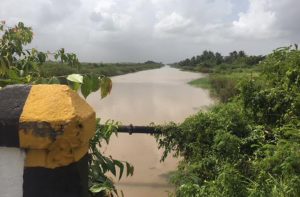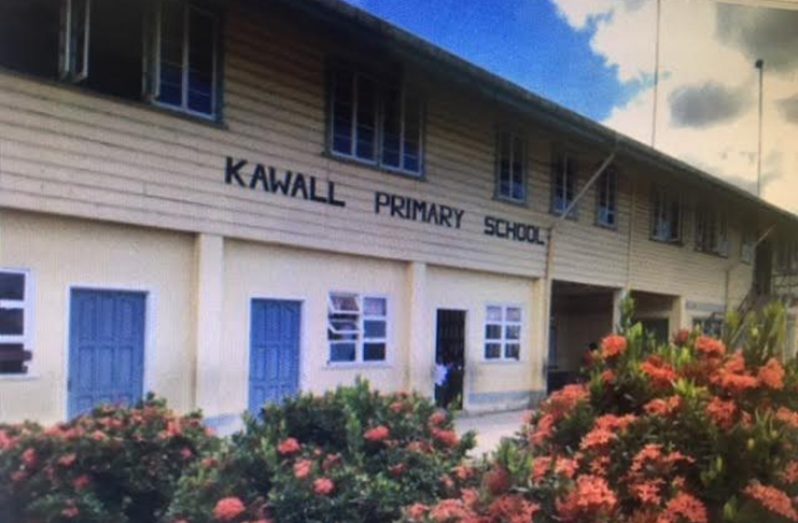By Francis Quamina Farrier
HAVE you ever taken a drive along the Canal No.2 Public Road all the way to the very western end? And have you ever stood on the West Bank Demerara Public road, backing the koker at Stanleytown, at the eastern end of the Canal No. Two, and gazed westward as it stretches from where you stood into infinity? And have you ever wondered how those enslaved Africans were able to dig that lengthy canal, almost with their very bare hands? There are some Guyanese who have done so, and realise that it took very hard work in constructing and developing the massive drainage and irrigation infrastructure on Guyana’s coastlands during the era of slavery.
Over the past century or so, all of the northern side of the Canal No. 2 has been developed into residential communities. In more recent decades, a large number of those residents have migrated, a high percentage of which settled in New York. And during the past 25 years, they have met at reunions. After meeting many of you at the 2018 Canal No.2 Reunion, Flushing Meadows, New York, I must say this: Canal People Rock. That was the way New York-based George Nandan expressed himself to the large gathering at the 25th Annual Reunion, by overseas-based Guyanese from Canal No.2, West Bank Demerara.
This event, “Provided a great opportunity to reunite the village people, families, friends and neighbours together for the day at the park,” a happy George Nandan related, adding, “It is also a great occasion for us to celebrate gratitude and reflection.”
Over the more recent decades, Guyanese of African and Indian heritage, have been residing primarily on the northern bank of the canal which stretches east to west from the West Bank Demerara Public Road to the back lands. Many of the residents in the past were employed at the Wales Sugar Estate. Many others were professionals, employed with the Public Service or private establishments.

A few weeks ago, I was at Canal No.2, where I visited with one of the oldest residents of the area 97-year-old Wilfred Duncan. A former canecutter at the Wales Sugar Estate, the nonagenarian expressed concern at the closing down of the Wales Sugar Factory and spoke of the long-gone days when British Guiana supplied sugar to many foreign countries. Those were the days when the term, “Sugar is king”, was a popular saying. He also spoke of the unity between the Africans and Indians of Canal No.2.
Like many other residents in the colonial era, Wilfred Duncan also cultivated the land as a farmer, planting crops such as ground provisions and citrus. He also reared livestock such as cows, pigs and goats. Like his fellow villagers, he was an early riser and was up and about before the sun rose to go about his daily activities. That was the life at No.2, and much hasn’t changed except that there are now many more beautiful and modern houses and potable water in homes. There is also a television set in almost every home.
At the reunion, George Nandan spoke of a tragedy which took place back in 1979, when eight sugar workers from the Wales Estate were killed when a Tata bus crashed into the estate truck in which they were travelling. This was the focus of a song which was sung at the event paying tribute to the victims. Their death turned out to be the biggest funeral in Canal No. 2’s history, and was attended by hundreds of mourners, including Dr Cheddi Jagan. George Nandan had many other reminiscences for the crowd. “Canal had pretty much red brick and mud road at the time and small outboard engine passenger boats used to take passengers up to Matthews to the buses. Later Burnham had the road paved for the Clay Brick factory to be constructed.”
Although I have, on previous occasions, written about the high regard I have for the teachers and students of the Kawall Primary School, I will take this opportunity to, once again, point out that the school has been clean, green and flowering for many years. On one occasion while covering a Christmas fete there for TV, I observed students taking litter to the tiny clay brick incinerator at the west side of the school for burning. I further noticed that the students were doing that chore without any urging or supervision by the teachers. On another visit to the Canal in 2016, I did a poetry session for the students. While there, I observed the water level in the canal was extremely low. It was a different situation a few months ago when the community suffered flooding.
Many of the homes at and around the community, like Wilfred Duncan’s, are partly constructed with clay bricks which were manufactured at a factory in the area some years ago. There is also an all-weather road which is a great improvement from the red-dirt road of the colonial era. Another development which has positively impacted the community was the construction of the Demerara Harbour Bridge. Prior to that, many residents travelled by launch from the Stanleytown koker to the Stabroek Market Stelling in Georgetown.
The reunion was sponsored by the Canal No. 2 Polder Charity Group of the USA, which also sponsors the annual Canal Senior Citizens Christmas Party at the Kawall Primary School.
Among the dozen rules regarding this reunion, which intrigued me the most, is the one which states: “Enjoy yourself and make new memories, especially with the seniors.”
Nandan, who is an entertainer and who is at present, working on the production of a movie and is the events’ main organiser, is already asking members to plan early for the 2019 reunion. This event is usually kept on the second to last Sunday of July. The organising committee extends another invitation for all US-based residents to be there next year, 2019, whether they reside in Queens, or Brooklyn or beyond New York.



.jpg)








